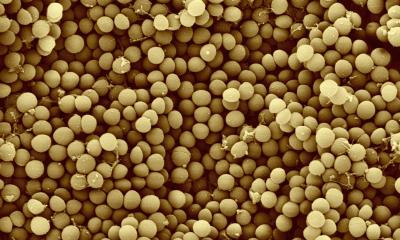W.A.R. against wound infections
Prevention is better than a fight against an infected wound – but, to avoid a battle you must know your enemy – and the wound’s infection risk level. Unfortunately, there are no generally accepted definitions for those risk levels. Now, the introduction of a new clinical assessment score – named W.A.R. (wound at risk) – which makes standardised classification of ‘risky’ wounds possible, could bring welcome changes to wound infection prevention and healing. Karoline Laarmann reports

Following the first publication of a scientific paper introducing W.A.R. in Skin Pharmacology and Physiology Journal (Vol. 24, No. 5, 2011), in May the new wound at risk scoring system was presented at the Annual Conference of the European Wound Management Association, in Brussels. It drew considerable attention. Headed by lead author Dr Joachim Dissemond, Department of Dermatology, University Clinic Essen, its initiators consist of wound care specialists from Germany, the UK, Austria, Switzerland, Italy and the Kingdom of Bahrain. Based on expert discussions and current knowledge, they developed the W.A.R. score, using a simple points scoring system, co-author Andrew Kingsley MSc, Clinical Manager for Infection Control and Tissue Viability, at the UK’s Northern Devon Healthcare Trust, explained during our interview. ‘The W.A.R. score is composed of three classes of risk point levels. They are oriented on concrete patient circumstances. So, for example, if a patient suffers from an immunosuppressive disease, such as diabetes, and if he or she is aged over 80 years, this falls under class category I and means 1 point is scored for every indication identified on the list of risk definitions in that risk class. Risk factors included in class II are scored at two points each and, among other things, these are bite wounds, gun or stab wounds penetrating up to 3.5cm. ‘In the same way, risk factors of category III score three points – for example, severe burn wounds of >15% body surface area,, and wounds with a direct connection to an organ or functional structure. All applicable points are added up. If a total of three points or more is reached, the wound is considered to be at risk and ‘W.A.R’ is declared.’ Parallel with the point scoring method, W.A.R. is also declared for any wound known to contain a multi-resistant organism, as specified by the Robert Koch Institute, such as MRSA, or it is considered to be critically colonised. In this case, the W.A.R. score gives recommendations for the use of antiseptics on the basis of polihexanide, which is characterised by a broad antimicrobial spectrum, excellent cell and tissue tolerability, a capacity to bind to an organic matrix, low risk of contact sensitisation and positive adjuvant effects to wound healing. ‘In contrast to silver or iodine, polihexanide is more compatible with human tissue,’ he pointed out. ‘Although silver is highly accepted in Europe, and shows good clinical results when used as indicated by the manufacturers, there is a concern that it might penetrate into and persist in the body with the potential for as yet unidentified effects sometime in the future. So polihexanide might have the better safety profile both in the short term and in the long-run.’ Despite a clinical need for antiseptic dressings in controlled release formulations to be available for the prevention and control of infection, they are commonly either not included or placed on restricted access in local wound dressing formularies because they are more expensive than nonantiseptic versions. This is another reason why, according to Andrew Kingsley, it is important to have a systematic way of appraising the wound infection risk so that healthcare funds can be spent effectively. Achieving consistency in product selection between clinicians by enabling an evidencebased decision to be made using a risk calculator will ensure that those holding the purse-strings in European healthcare systems will become more confident in providing funds for more expensive antiseptic dressing products. Now that the concept has been made public, he emphasises that the W.A.R. score has nowhere near reached its final stage. ‘We’re really more at a starting point in terms of calculating risk factors. As it will reveal, over time through wider debate, certainly other risk features will be included.’ An additional part of that work will be to transfer the W.A.R. score into clinical practice where it has yet to prove its uses. Another future step will be to combine the W.A.R. score with the Sign Checker, a checklist, developed by Andrew Kingsley, for the early identification of mild to more severe infection in open wounds. Normal inflammatory processes of healing and the abnormal states of wound infection share many similarities that can confuse clinicians and lead to inappropriate therapy choices. The Sign Checker uses signs and symptoms to help clinicians to understand whether the wound is progressing normally or is in need of anti-infective interventions. So either way, in prevention as well as management of wound infection, with these two new instruments, clinicians in the future will be well kitted out for battle.
11.07.2012





